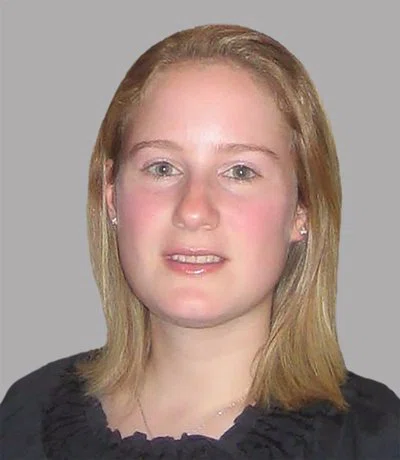


Restorative Medicine
Ultra-high-Resolution Scanner Reveals if Knee Injury Advances to Osteoarthritis
Houston Methodist researchers use 7 Tesla magnetic resonance imaging with gadolinium dye to predict a predisposition for post-traumatic osteoarthritis.

Capable of carrying up to five times an individual’s body weight, the knee joints are formidable powerlifters. However, when there is a severe injury to the joint, such as an anterior cruciate ligament (ACL) tear, the knee is vulnerable to slow recovery; and in some cases, set on a path toward post-traumatic osteoarthritis, a long-standing painful condition that presently has no cure.
An impediment in preventing post-traumatic osteoarthritis is the lack of noninvasive techniques to zoom into the small anatomical changes happening in the knee post-injury. To overcome this gap, using ultra-high field 7 Tesla magnetic resonance imaging (MRI) with gadolinium dye, Houston Methodist researchers have developed a protocol for tracking changes in the knee joints of rabbits after an experimentally induced ACL injury, a known yet understudied risk factor for osteoarthritis.
Although the study is in an animal model, the researchers said the ultra-high-resolution monitoring of the knee after an ACL tear sets the stage for identifying the root cause of osteoarthritis progression, a timeline for intervention and a potential platform to test the efficacy of therapeutic interventions.
“What is available for treating people with osteoarthritis is pain management or in the worst case, a total knee replacement, and I thoroughly believe that we could do better,” said Carly Filgueira, PhD, assistant professor of nanomedicine. “We're in the age where we now have the technology to identify if there could be a predisposition to osteoarthritis and prevent it from getting to the stage where you need to undergo an invasive surgical procedure.”

Carly Filgueira, PhD, assistant professor of nanomedicine
A report on the study is published in the journal Osteoarthritis and Cartilage Open.
Around 12% of all cases of osteoarthritis are caused by knee injuries. Further, the onset of symptoms of post-traumatic osteoarthritis can be very variable from a few months to years. During the early stages of recovery, when the patient is asymptomatic, biochemical and genetic changes occurring within the joint engender small morphological changes to the cartilage and bones within the knee. Some of these architectural modifications of the joint could contain telltale signs of future osteoarthritis, but they can be completely missed by routine radiographs that lack the resolution needed.
Flip the card over to learn more about post-traumatic osteoarthritis
However, MRI scans, particularly used with gadolinium dye, provide a much better view of the knee joint. This MRI technology, boosted with a 7 Tesla magnetic coil, has the power to yield an ultra-high-field view of the knee joint, particularly the cartilage. Further, the researchers noted that 7T gadolinium-enhanced MRI has never been used before to monitor the knee joint over a period of time to check for post-traumatic osteoarthritis progression.
“The big thing you have to think about is the thickness of the cartilage,” said Filgueira. “The 7T magnetic coil offers a high-resolution way to quantify very small-scale changes in cartilage thickness.”
Specifically, among other quantities, the researchers measured the delayed gadolinium-enhanced MRI of cartilage or the dGEMRIC index. Here, lower index values indicate degenerative changes or thinning in the articular cartilage. For their study, the team chose rabbits as their model systems and induced an ACL tear surgically in these animals. The large animal model allowed the researchers to reproduce the ACL tear across experiments and the ability to systematically follow the cartilage over 10 weeks of recovery. Further, rabbit knees from the same animal, one with the ACL tear and one without, both fit into the coil of the 7T MRI scanner at the same time, facilitating comparisons between the joints.
Rotating 3D view of a rabbit knee joint taken with 7 Tesla MRI scanner. Dark yellow patches show bony outgrowths or osteophytes associated with the degeneration of the knee joint. Video provided by Carly Filgueira, PhD.
Upon refining their scanning protocol several times to optimize parameters that improved the signal to noise, the team found that compared to the intact cartilage, there was a 35% and 39% decrease in the dGEMRIC index of the ACL on the medial side of the injured knee joint at seven and ten weeks, respectively.
“This result is really key because we now have a time point when there is real evidence of cartilage degradation,” said Filgueira. “You can now say ‘OK, here's a time when we should be intervening’ and if we wait too long, any type of intervention is going to be too late because we've lost the cartilage.”
Thus, with an established model for post-traumatic osteoarthritis, the success of an intervention, such as nanomedicine, can be evaluated reliably. More broadly, their observations, although in rabbits, also make a strong case for early intervention and rehabilitation of the human knee after an ACL injury.
“Now, we have printed studies that show that you do need to intervene early, and you need to be put on a regimen that can prevent cartilage loss,” said Filgueira. “I think and hope that our study can help change people's mindsets.”
The research was supported by the Department of Orthopedics Pilot Project Initiative and funds from Houston Methodist Research Institute.
Rossana Terracciano, Yareli Carcamo-Bahena, Amber Lee R. Royal, Danilo Demarchi, John Scott Labis, Joshua D. Harris, Bradley K. Weiner, Nakul Gupta, Carly S. Filgueira, Quantitative high-resolution 7T MRI to assess longitudinal changes in articular cartilage after anterior cruciate ligament injury in a rabbit model of post-traumatic osteoarthritis,
Osteoarthritis and Cartilage Open, Volume 4, Issue 2, 2022,100259, ISSN 2665-9131, https://doi.org/10.1016/j.ocarto.2022.100259.
Vandana Suresh, PhD
October 2022
Related Articles








